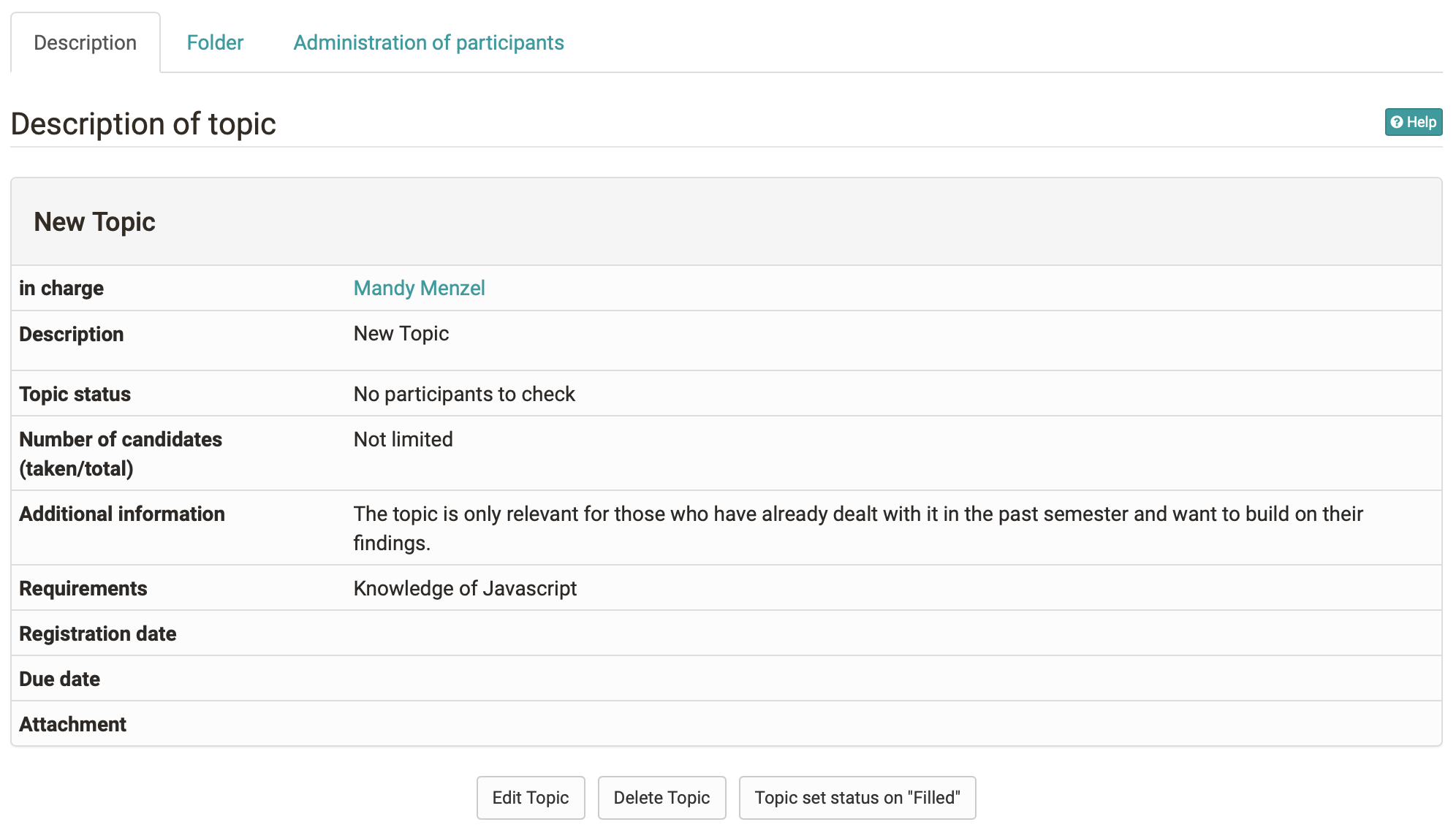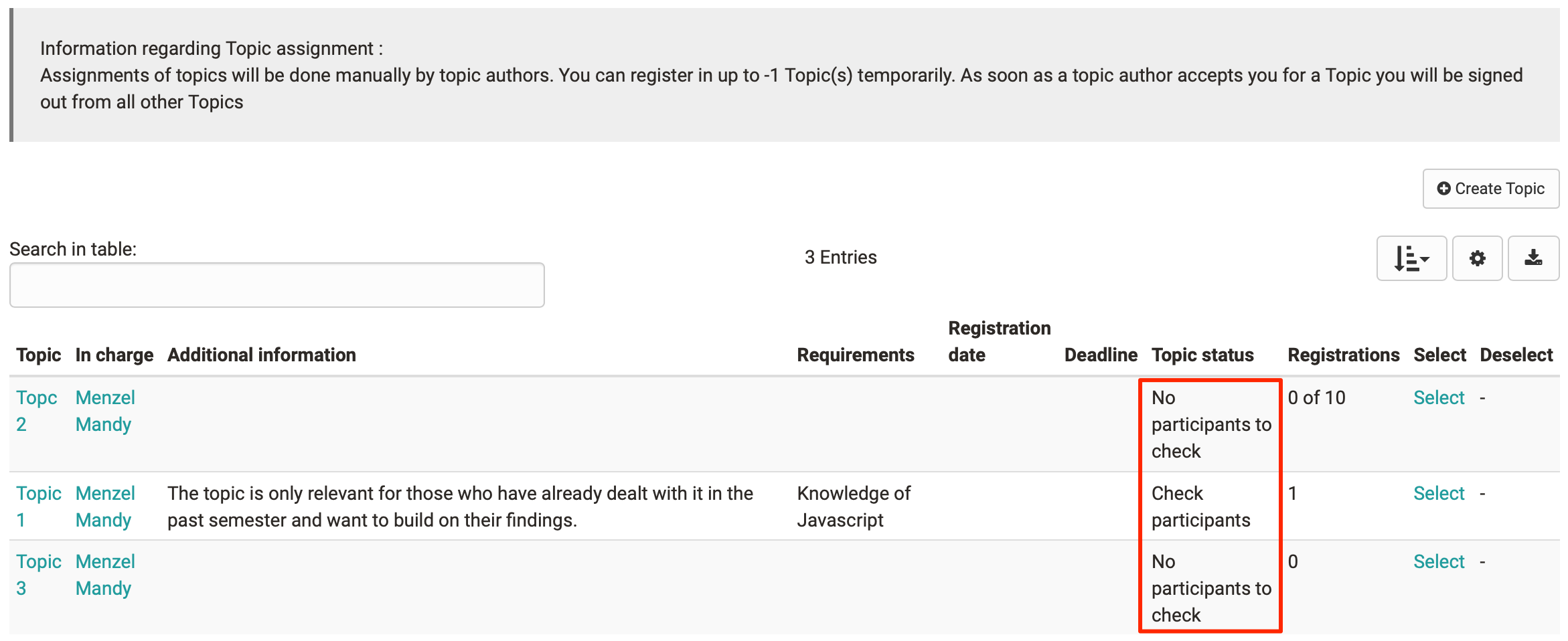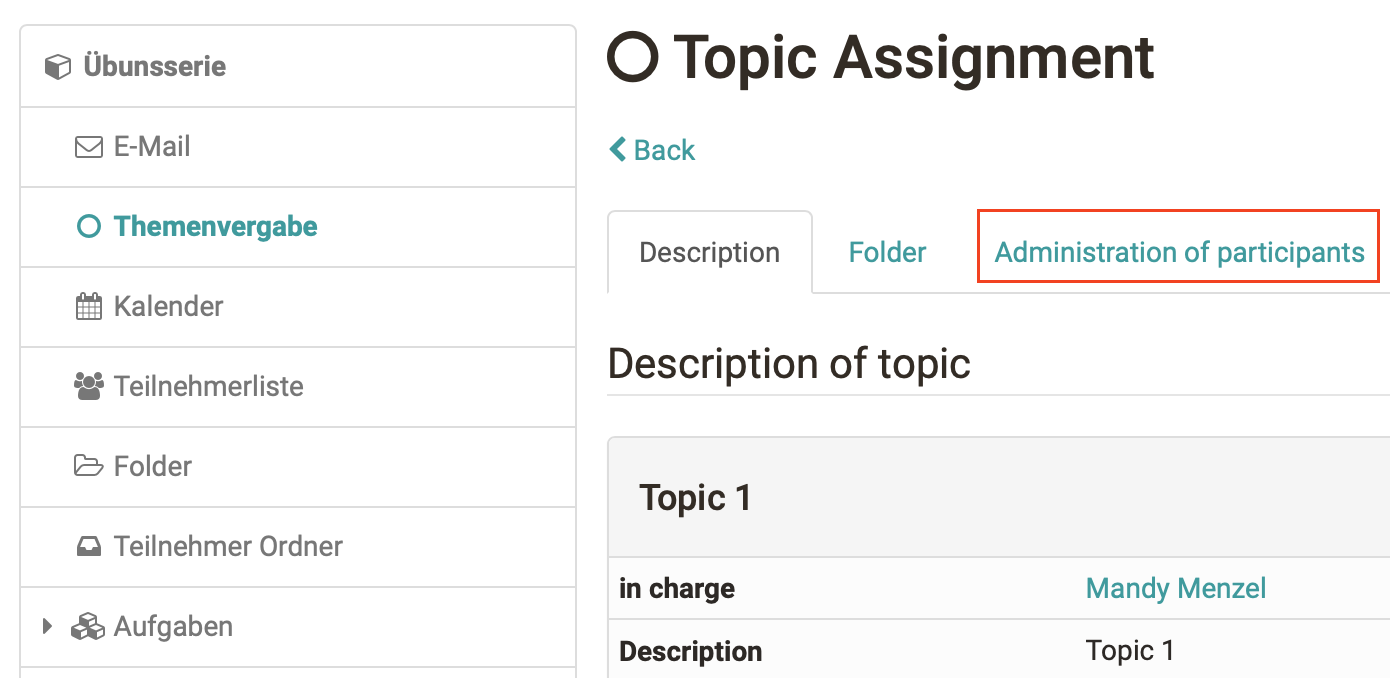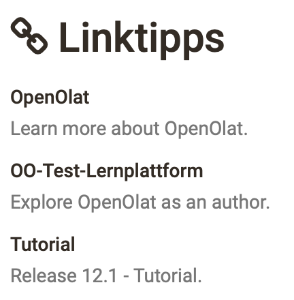Course Element: LTI Page
By means of the course element "LTI page" it is possible to integrate external learning applications in your course before having their content displayed in an OpenOlat window. LTI means "Learning Tool Interoperability" and is an IMS standard to embed external learning applications such as e.g. a chat, a media Wiki, a test editor, or a virtual lab. More information about LTI can be found on the LTI project page: http://www.imsglobal.org/lti/
Indicate the URL to be referenced in the tab "Page content" along with its key and password. When selecting this LTI page in the course navigation, the user must accept the data transfer for privacy protection reasons first, before any user data, course information or keys will be transferred to the embedded application, password controlled and in the background. Your learning application will check access rights and grant access with a valid key. A new query for data transfer only occurs again later if the configuration of the device changes with regard to the transmitted data.
When the user selects the LTI page in the navigation, the integrated learning application appears in the OLAT course.
Course Element: Topic Assignment
The course element "Topic assignment" is useful if you want to announce e.g. topics for term papers in your course before having them supervised. Course authors determine the detailed configuration of their topic assignment. This comprises e.g. who has the right to announce and supervise topics, how topics have to be described, or how many topics can be selected by one course participant. What makes this course element so special is the fact that not course authors but topic authors will announce and supervise such topics.
Editor view
How to configure topic assignments
In the tab "Configuration" you determine first how many topics can be selected by one participant, if this selection is definite or if it has to be accepted by the topic author first. Furthermore you can add additional fields to describe a topic in more detail. This description will then be displayed in the table containing all topics announced. Here you can also determine if registrations and submissions shall only be possible within a certain period of time. In the tab "Sub-elements" you can choose if there should be a drop box as well as a return box in your topic assignment. Course participants will then upload their files to that drop box while topic authors will return those files by means of a return box.
Course view
How to create a new topic
As a course owner or topic manager, you can set up new topics. If you give the learner the right to set a topic (suggestion) within a course, you can help determine how a course is to be structured, for example, or submit suggestions for potential homework or presentations.
Click on "Create new topic" and enter the topic title and description. Depending on the configuration of the topic assignment, you can describe the topic with further details, set the enrolment and submission deadlines, determine how many course participants may choose your topic and upload additional files as attachments if required. In addition, you determine whether participants are allowed to deselect topics and whether those responsible for the topic should be notified by e-mail when topics are selected or deselected.
If you want to change the configuration at a later time, click on the topic title. Now you can edit the topic, change the topic status from "free" to "occupied" or vice versa or delete the topic.
From the user's perspective:
If the topic status is set to "Free", users can register for a topic, as long as they have not exceeded the maximum possible topic selection. If the topic status is set to "Occupied", no further users can register. If you have already selected a topic, the topic status is either "Provisionally assigned" if the person responsible for the topic has to accept you as a participant, or "Assigned" if the registration is automatic. As soon as the topic owner accepts you as a participant, the topic status is set to "Definitively assigned".
Course Element: Link list
The course element "Link list" enables the author to quickly assemble a collection of links relevant to the course. No HTML proficiency is required. Simply open the course editor, navigate to the link list course element, open the "Configuration" tab and enter either the URL of the website you wish to add as a link, or select a target file by clicking on the magnifier icon. You can upload files in the now open modal window. Next, select whether the link should open in a new or in the same window, and enter the title of the link. A description or other additional information on the link can be added through the comment field, located beneath the address field. Remove or add links by using the trash / + buttons.
Course Element "Assignment of dates"
Here you can create and edit those dates for which users can enroll. It is also possible to define if cancelling an enrollment shall be allowed. Furthermore you can manage your participants.
The assignment of dates can be set in the course editor in the tab "Configuration" as well as when the editor is closed.
Assignment of dates
Manage events Opens the tools for creating and changing events. The link "Create event(s)" allows you to create one or more events at the same time. You can either edit events one at a time or multiple simultaneously. If a single event is being edited, the current properties are already preset in the input boxes; therefore it will be easier to make modifications. When editing multiple events, the input boxes are initially all empty. Only if an empty box is overwritten will the corresponding property be changed. If you just want to move your events, the boxes remaining can be left blank.
Manage participants Opens the tool for deleting, adding, and notifying participants.
Signing out allowed: Here you can define whether users should be able to cancel their enrollment.






